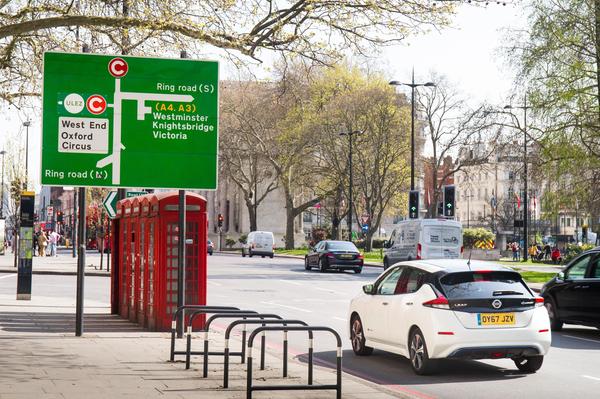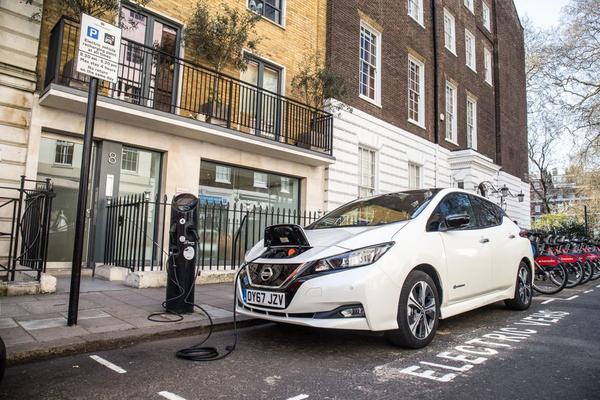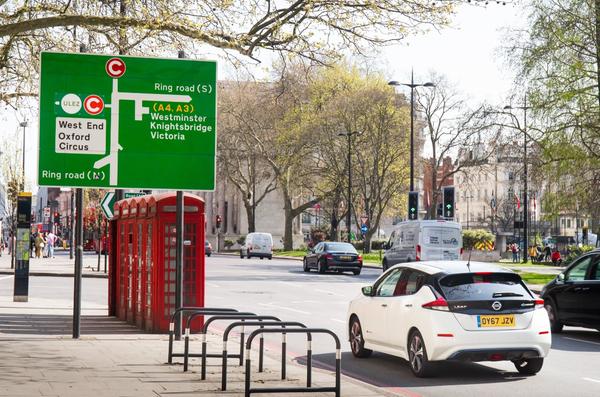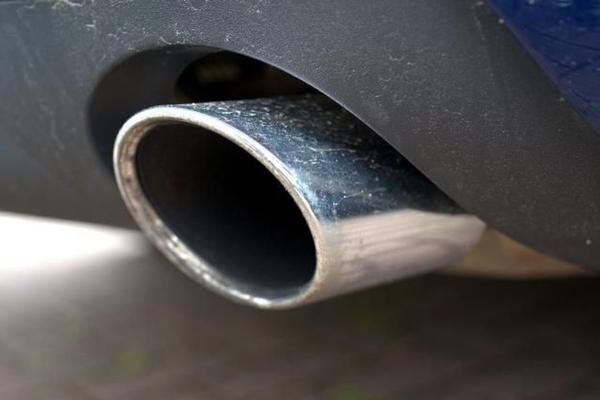Advice
UK Clean Air Zones and ULEZ 2025: Everything you need to know
London’s ULEZ has expanded, and more UK cities are adopting clean air zones. Find out what this means for you and find ULEZ compliant cars for sale.


Words by: Andrew Woodhouse
Last updated on 9 January 2025 | 0 min read
The UK now contains several Clean Air Zones (CAZ) and Low Emission Zones (LEZ), alongside an Ultra Low Emission Zone (ULEZ) that covers all London boroughs.
We’ll explain what each of these mean, as the rules can vary from city to city. Let’s start with ULEZ. The ULEZ (Ultra-Low Emission Zone) was originally introduced in 2019 and applies to cars and motorcycles. ULEZ charges are applied to: • Diesel cars and vans that don’t meet Euro 6 Standards • Petrol cars and vans that don’t meet Euro 4 Standards • Motorbikes that don’t meet Euro 3 Standards We'll talk about Euro Standards, and the charges applied, further down this page.
We’ll explain what each of these mean, as the rules can vary from city to city. Let’s start with ULEZ. The ULEZ (Ultra-Low Emission Zone) was originally introduced in 2019 and applies to cars and motorcycles. ULEZ charges are applied to: • Diesel cars and vans that don’t meet Euro 6 Standards • Petrol cars and vans that don’t meet Euro 4 Standards • Motorbikes that don’t meet Euro 3 Standards We'll talk about Euro Standards, and the charges applied, further down this page.
ULEZ compliant cars
Vehicles needs to meet different emission standards to travel through ULEZ, or other low emission zones, without paying a charge. If your car exceeds the emissions standards set for the zone, you may have to pay a charge to enter.
As the driver, it’s your responsibility to check you’re compliant. You can use the Government’s clean air zone tool to see whether you’ll need to pay - you’ll just need your number plate to start. ULEZ compliant cars meet the emission standards, which we list in full below.
As the driver, it’s your responsibility to check you’re compliant. You can use the Government’s clean air zone tool to see whether you’ll need to pay - you’ll just need your number plate to start. ULEZ compliant cars meet the emission standards, which we list in full below.
ULEZ compliant petrol cars for sale
Petrol cars must meet Euro 4 emissions standards to be ULEZ compliant. Most, if not all, petrol cars registered since January 2006 meet these standards.
Petrol cars that meet Euro 5 and Euro 6 standards are also exempt from paying charges.
Petrol cars that meet Euro 5 and Euro 6 standards are also exempt from paying charges.
ULEZ compliant diesel cars for sale
Diesel cars must meet Euro 6 standards to be ULEZ compliant.
Almost every diesel car registered since September 2015 meets these standards, though some earlier models do too (you can find some ULEZ compliant diesel cars going back to 2012).
Almost every diesel car registered since September 2015 meets these standards, though some earlier models do too (you can find some ULEZ compliant diesel cars going back to 2012).
ULEZ compliant hybrid cars for sale
To be ULEZ compliant, hybrid cars must meet the same standard as petrol or diesel cars. So petrol hybrids (the most common type), must meet Euro 4 standards and diesel hybrids must meet Euro 6 standards.
ULEZ compliant electric cars for sale
All electric cars are ULEZ compliant, as they produce zero tailpipe emissions.
You can find ULEZ compliant electric cars for sale and learn more about electric cars on Autotrader.
You can find ULEZ compliant electric cars for sale and learn more about electric cars on Autotrader.

Is my car ULEZ compliant?
You can find out if your current car is ULEZ compliant by checking the vehicle logbook for the “vehicle’s minimum emission standard”. In newer vehicles, the emission standard may be listed on the V5C in section D.2. Alternatively, you can try asking the vehicle manufacturer.
London ULEZ checker
You can check whether your vehicle is ULEZ compliant by entering your registration number into the TFL ULEZ checker.
Just be aware that sites like these aren’t 100% accurate. There have been cases where people have been told their car is Euro 6 compliant, then received a fine as that wasn’t the case. You should investigate properly. The most accurate way to find out if your car is ULEZ compliant is to ask your manufacturer or refer to the handbook and confirm for yourself. Related: ULEZ expansion in London confirmed from 29 August 2023 onwards
Just be aware that sites like these aren’t 100% accurate. There have been cases where people have been told their car is Euro 6 compliant, then received a fine as that wasn’t the case. You should investigate properly. The most accurate way to find out if your car is ULEZ compliant is to ask your manufacturer or refer to the handbook and confirm for yourself. Related: ULEZ expansion in London confirmed from 29 August 2023 onwards
Can I sell my car if it isn’t ULEZ compliant?
Yes, you can still sell your car. If you’re selling in cities like London, potential buyers will be in the same situation as you – so you might not fetch as good a price or might find your advert is listed for longer.
Learn more about your options when it comes to selling your car. When he announced the ULEZ zone was being extended, London Mayor Sadiq Khan also announced a massive expansion of scrappage scheme to all Londoners, offering scrappage grants of up to £2,000 to every single Londoner with a non-compliant car or motorcycle. You can learn more about the scrappage scheme here. This scrappage scheme will help many more drivers, including those who drive vans or minibuses, switch by making it more affordable. If you opt for the scrappage scheme and get the two grand, there are nearly over 9,000 ULEZ compliant cars for sale for under £2,000, with more being added all the time.
Learn more about your options when it comes to selling your car. When he announced the ULEZ zone was being extended, London Mayor Sadiq Khan also announced a massive expansion of scrappage scheme to all Londoners, offering scrappage grants of up to £2,000 to every single Londoner with a non-compliant car or motorcycle. You can learn more about the scrappage scheme here. This scrappage scheme will help many more drivers, including those who drive vans or minibuses, switch by making it more affordable. If you opt for the scrappage scheme and get the two grand, there are nearly over 9,000 ULEZ compliant cars for sale for under £2,000, with more being added all the time.

What are European emission standards?
European emission standards represent an acceptable amount of pollution emitted by a vehicle’s exhaust, and are measured using WLTP and RDE tests.
To improve air quality and reduce pollution, all vehicles must meet European emission standards. The sixth, and latest, set of standards (called Euro 6), was released in 2015. Higher Euro numbers (e.g. Euro 5 and Euro 6) mean it’s a newer engine with cleaner emissions. Lower Euro numbers are used for older and more polluting engines. The aim of European emission standards is to reduce the levels of harmful emissions, including carbon monoxide, nitrogen oxides, hydrocarbons and particulate matter.
To improve air quality and reduce pollution, all vehicles must meet European emission standards. The sixth, and latest, set of standards (called Euro 6), was released in 2015. Higher Euro numbers (e.g. Euro 5 and Euro 6) mean it’s a newer engine with cleaner emissions. Lower Euro numbers are used for older and more polluting engines. The aim of European emission standards is to reduce the levels of harmful emissions, including carbon monoxide, nitrogen oxides, hydrocarbons and particulate matter.
More information on ULEZ and London’s Low Emission Zones
What is London’s ULEZ?
On 25th October 2021, the London Ultra Low Emission Zone (ULEZ) extended further from Central London, creating a larger single zone from the North Circular Road (A406) to South Circular Road (A205).
From 29 August 2023, London's Ultra-Low Emission Zone (ULEZ) has expanded to cover all boroughs, after the Mayor of London, Sadiq Khan, vowed to do so and “not to step back from tackling air quality and taking climate action to safeguard the health and future of every Londoner”. ULEZ was originally introduced in 2019 and, unlike the surrounding low emission zone, the criteria apply to cars and motorcycles. ULEZ charges are applied to: • Diesel cars and vans that don’t meet Euro 6 Standards • Petrol cars and vans that don’t meet Euro 4 Standards • Motorbikes that don’t meet Euro 3 Standards
From 29 August 2023, London's Ultra-Low Emission Zone (ULEZ) has expanded to cover all boroughs, after the Mayor of London, Sadiq Khan, vowed to do so and “not to step back from tackling air quality and taking climate action to safeguard the health and future of every Londoner”. ULEZ was originally introduced in 2019 and, unlike the surrounding low emission zone, the criteria apply to cars and motorcycles. ULEZ charges are applied to: • Diesel cars and vans that don’t meet Euro 6 Standards • Petrol cars and vans that don’t meet Euro 4 Standards • Motorbikes that don’t meet Euro 3 Standards
ULEZ charges
Non-compliant vehicles will have to pay £12.50 per day to enter, on top of the congestion charge (£11.50 per day). If you don’t pay, you face a £180 fine per day.
Buses, coaches and lorries will need to pay £100 per day if they don’t meet or exceed Euro 6 Standards.
Buses, coaches and lorries will need to pay £100 per day if they don’t meet or exceed Euro 6 Standards.
Is ULEZ only in London?
London’s ULEZ is the world’s first 24-hour ultra-low emissions zone. There are plans for low emission zones, with slightly more lax criteria, in other UK cities.
London’s ULEZ is within a wider low emission zone itself.
London’s ULEZ is within a wider low emission zone itself.
What is the London low emission zone?
London’s low emission zone gives us a clear example of how low emissions zones could work in the UK.
Launched in 2008, it operates 24/7 and covers most of Greater London. Charging days run midnight to midnight, so if you drive through the zone from 11pm to 1am, you’d need to pay for two days. The low emission zone currently applies to heavy vehicles and vans, but not currently cars. Inside the London LEZ is London’s ultra-low emission zone (ULEZ).
Launched in 2008, it operates 24/7 and covers most of Greater London. Charging days run midnight to midnight, so if you drive through the zone from 11pm to 1am, you’d need to pay for two days. The low emission zone currently applies to heavy vehicles and vans, but not currently cars. Inside the London LEZ is London’s ultra-low emission zone (ULEZ).

Learn more about UK low emission zones
What are low emission zones?
Low emission zones aim to improve air quality by discouraging or restricting polluting vehicles, usually by charging them to enter.
They are normally found in city centres with heavy traffic, low emission zones encourage the use of electric vehicles, hybrids and other alternative fuel vehicles. Another name for low emission zones is clean air zones (CAZ).
They are normally found in city centres with heavy traffic, low emission zones encourage the use of electric vehicles, hybrids and other alternative fuel vehicles. Another name for low emission zones is clean air zones (CAZ).
Can I drive in low emission zones?
Currently, you are not banned from driving through low emission zones, but you may be charged for doing so.
There are four classes of low emission zone, and they each charge different types of vehicle: • Class A charges buses, coaches, taxis and private hire vehicles (PHVs) • Class B charges all in Class A plus heavy goods vehicles (HGVs) • Class C charges all in Class A and B, plus light goods vehicles (LGVs) • Class D charges everything above and cars
There are four classes of low emission zone, and they each charge different types of vehicle: • Class A charges buses, coaches, taxis and private hire vehicles (PHVs) • Class B charges all in Class A plus heavy goods vehicles (HGVs) • Class C charges all in Class A and B, plus light goods vehicles (LGVs) • Class D charges everything above and cars
How do low emission zones work?
There are currently two types of low emission zone: charging and non-charging.
Non-charging low emission zones
In non-charging low emission zones, measures such as rerouting traffic and retrofitting polluting vehicles are taken to keep vehicle emissions in highly polluted areas down.
Charging emission zones
In charging low emission zones, Automatic Number Plate Recognition (ANPR) cameras log cars as they drive into the zone. If the vehicle doesn’t meet the standards, drivers are then automatically sent a bill. If you don’t pay, you’ll just face heavier penalties and it’ll cost you more in the long run. There aren’t any barriers or toll booths.
London’s Ultra Low Emission Zone (ULEZ) was the first charging low emission zone in the country. Similar plans have been announced for cities like Bath and Birmingham in the near future.
London’s Ultra Low Emission Zone (ULEZ) was the first charging low emission zone in the country. Similar plans have been announced for cities like Bath and Birmingham in the near future.
Is my vehicle exempt from LEZ?
You may be exempt from LEZ charges if the following applies to you:
• You have a military or historic vehicle • You have a disabled passenger tax class vehicle • Your vehicle is classed as ultra-low emission (see below) • Your vehicle is retrofitted with Clean Vehicle Retrofit Accreditation Scheme (CVRAS) technology. There may also be local exemptions, so contact your local council for more information. You can view the full list of exemptions here.
• You have a military or historic vehicle • You have a disabled passenger tax class vehicle • Your vehicle is classed as ultra-low emission (see below) • Your vehicle is retrofitted with Clean Vehicle Retrofit Accreditation Scheme (CVRAS) technology. There may also be local exemptions, so contact your local council for more information. You can view the full list of exemptions here.
Where are the low emission zones in the UK?
A number of UK cities now have Clean Air or Low Emission Zones. The rules vary depending on the city, so we cover the Class of zone and charges below.
The Scottish Government has also announced schemes in a number of cities. Scottish LEZ (similar to CAZ Class D) Cities: Aberdeen, Dundee, Edinburgh, Glasgow Charges: Penalty of £60 Active: 24/7 Class C CAZ (vans +) Cities: Bath, Bradford, Newcastle & Gateshead, Sheffield Charges: Bath: £9 for small vehicles; £100 for large Bradford: £7 for taxis; £9 for small vehicles; £50 for large Newcastle & Gateshead: £12.50 for small vehicles; £50 for large Sheffield: £10 for small vehicles; £50 for large Active: 24/7 Class D CAZ (cars +) Cities: Birmingham, Bristol, London (ULEZ) Charges: Birmingham: £8 for small vehicles; £50 for large Bristol: £9 for small vehicles; £100 for large London (ULEZ): £12.50 for small vehicles; Large vehicles pay a LEZ charge instead Active: 24/7, except London (ULEZ), which is every day except Christmas Class B CAZ Cities: Portsmouth, Southampton Charges: Portsmouth: £10 for taxis; £50 for large vehicles Southampton: Non-charging Active: 24/7 Class A CAZ City: York Charges: Non-charging Active: 24/7 Zero Emission Zone (ZEZ) City: Oxford Charges: £2 for ultra low emission vehicles; £4 for low emission vehicles; £10 for non-compliant vehicles Active: 7am-7pm daily
The Scottish Government has also announced schemes in a number of cities. Scottish LEZ (similar to CAZ Class D) Cities: Aberdeen, Dundee, Edinburgh, Glasgow Charges: Penalty of £60 Active: 24/7 Class C CAZ (vans +) Cities: Bath, Bradford, Newcastle & Gateshead, Sheffield Charges: Bath: £9 for small vehicles; £100 for large Bradford: £7 for taxis; £9 for small vehicles; £50 for large Newcastle & Gateshead: £12.50 for small vehicles; £50 for large Sheffield: £10 for small vehicles; £50 for large Active: 24/7 Class D CAZ (cars +) Cities: Birmingham, Bristol, London (ULEZ) Charges: Birmingham: £8 for small vehicles; £50 for large Bristol: £9 for small vehicles; £100 for large London (ULEZ): £12.50 for small vehicles; Large vehicles pay a LEZ charge instead Active: 24/7, except London (ULEZ), which is every day except Christmas Class B CAZ Cities: Portsmouth, Southampton Charges: Portsmouth: £10 for taxis; £50 for large vehicles Southampton: Non-charging Active: 24/7 Class A CAZ City: York Charges: Non-charging Active: 24/7 Zero Emission Zone (ZEZ) City: Oxford Charges: £2 for ultra low emission vehicles; £4 for low emission vehicles; £10 for non-compliant vehicles Active: 7am-7pm daily
How much will I have to pay to enter a LEZ?
Charges will be issued by local authorities, and these charges may vary depending on the type of vehicle you drive and its purpose (taxis and private hire vehicles may be charged differently, for example).
You can check if you’ll need to pay here.
You can check if you’ll need to pay here.
Ready to make the switch?
More information on UK Clean Air Zones
What is a Clean Air Zone?
To improve air quality, some local authorities are introducing clean air zones. These are primarily in city centres, where air pollution is at higher levels. Clean air zones operate in much the same way as ULEZ or LEZ – you pay a charge if your vehicle exceeds emission standards.
Clean air zones were originally introduced for buses, taxis and lorries, but private vehicles like cars are now being included.
Clean air zones were originally introduced for buses, taxis and lorries, but private vehicles like cars are now being included.
Where are the UK’s Clean Air Zones?
There are currently three clean air zones operating outside of London:
Bath has a Class C clean air zone. Birmingham has a Class D clean air zone. Portsmouth has a Class B clean air zone. There are also plans for clean air zones to introduced to other cities: Bradford’s Clean Air Zone will start charging on 26 September 2022. Bristol’s Clean Air Zone will start charging on 28 November 2022. Tyneside (Newcastle and Gateshead) will start charging in their CAZ winter: late 2022 to early 2023. Sheffield’s Clean Air Zone will start charging in early 2023. Greater Manchester’s plans are currently under review, and other cities are set to implement clean air zones in 2022.
Bath has a Class C clean air zone. Birmingham has a Class D clean air zone. Portsmouth has a Class B clean air zone. There are also plans for clean air zones to introduced to other cities: Bradford’s Clean Air Zone will start charging on 26 September 2022. Bristol’s Clean Air Zone will start charging on 28 November 2022. Tyneside (Newcastle and Gateshead) will start charging in their CAZ winter: late 2022 to early 2023. Sheffield’s Clean Air Zone will start charging in early 2023. Greater Manchester’s plans are currently under review, and other cities are set to implement clean air zones in 2022.